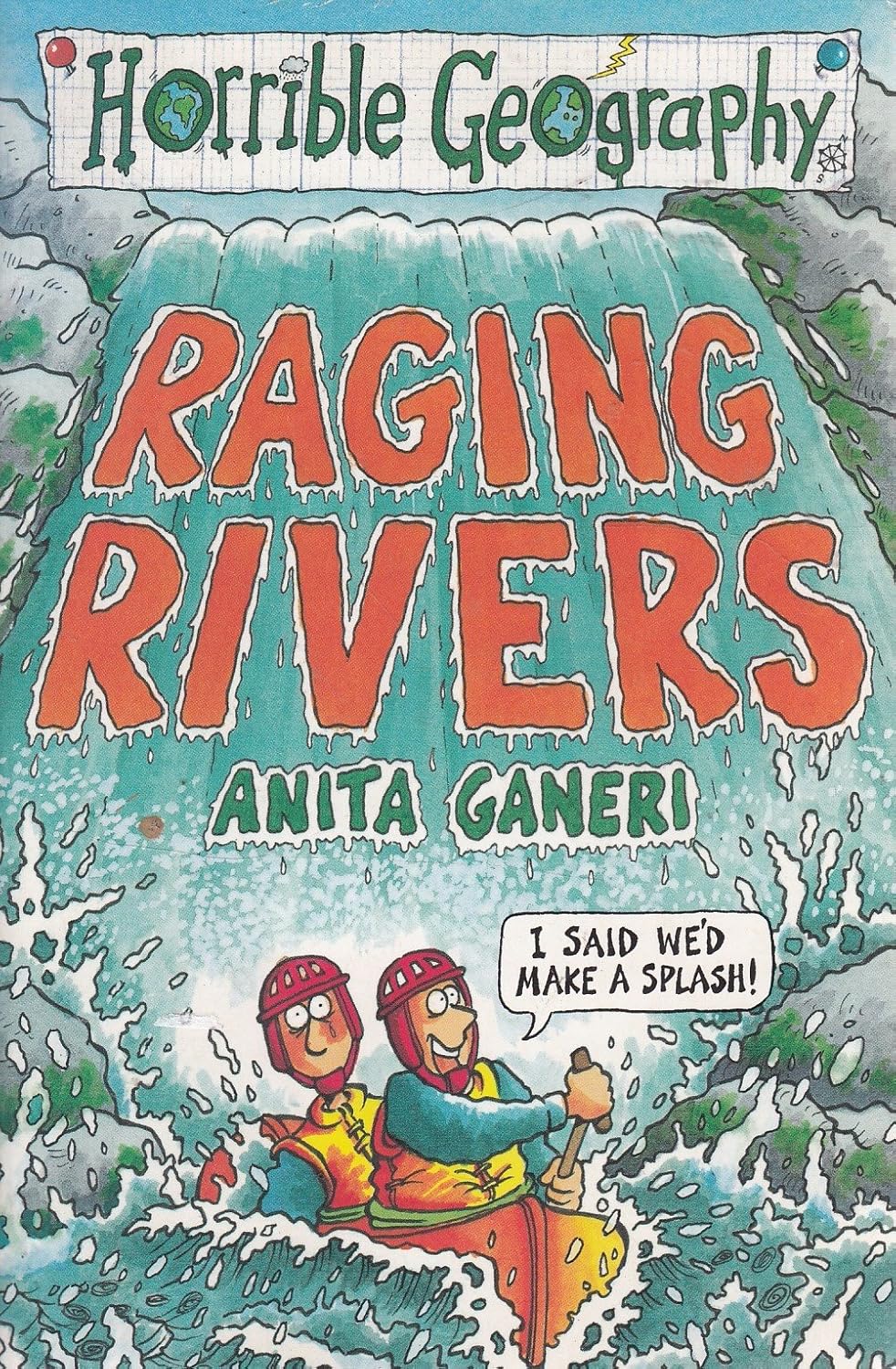Horrible Geography: Raging Rivers
- Brand: Unbranded

Description
Permeable: This type of land cover easily soaks up excess water. Example: Land with native plants growing on it. This type of land usually has not been compacted by human activities. Permeable Pavement - Students design and create models of rivers to see how human impacts change the permeability of riparian areas. De-Graft: That is cool. When we talk about rivers, one word that comes up is ‘flooding’. Do either of you two know what it means? De-Graft: Well historically, people used rivers to transport goods and bring trade to different areas. So, what kind of things do you think were transported on this river in the past?
Karen Sykes (February 13, 2003). "Hike Of The Week: Take your dog and bike to these nearby woods". Seattle Post-Intelligencer. De-Graft: Yeah, when a river gets too full, usually because of heavy rainfall, it can overflow or it can flood. Now, the land around a river that floods is called a floodplain. The Raging River is a tributary of the Snoqualmie River in western Washington state in the United States. It is located in the western foothills of the Cascade Mountains in east central King County, Washington. It gets its name from the large amount of water it sometimes carries. The record discharge at the gaging station is over 4,000 cubic feet (110m 3) per second. [2] The Raging is a salmon-bearing river and supports one-fifth of the Snoqualmie River's chinook runs. [3] The middle part of a river is on lower ground. Some streams and smaller rivers feed into it and they are called tributaries. The river carves its own path out to the sea and creates bends called ‘meanders’. Sometimes a river becomes so bendy it creates an easier route straight across and cuts off the meander. This forms what is called an ox-bow lake. Let's start by learning about the different parts of the water cycle, as illustrated in Figure 1. (Make the attached graphic of the water cycle into an overhead transparency to show students.)I’m in a place called Ironbridge where the River Severn runs through. And later locals Riley and Maisie will be joining me on the riverbank to explore. But first, let’s zoom out. De-Graft: Yeah, like an arch! What has been the most interesting thing you two have taken a picture of today? Semi-permeable: This land cover can soak up some water, but not as much as permeable surfaces. Examples: Farmland, soccer fields and lawns. Idea Web: Ask students to develop an idea web around the water movement for their local environment. How much precipitation is there? Is most of the precipitation rain, snow or something else? Where does the precipitation go? Are there many paved areas? Are there any rivers? Are there examples of how engineers have designed paths for the rainwater to flow off the pavement and onto grassy areas or rivers?
Explain some of the ways that engineers work with communities to protect rivers and prevent floods. Who can tell me what a river is? Yes, a river is a part of the land that has water flowing in it at least some time of the year. Land, called banks, surrounds each side of a river. We also call this area the riparian zone, which just means the land on either side of the river. Who has ever seen a river? Is there one near our school or your home? What might be found in the riparian area of the river? (Possible answers: Plants, animals, insects, sand, gravel, bike path, bridge, sidewalks, etc.) For what purpose might we use a river? (Accept all reasonable answers, which might include: fishing, transportation, swimming, kayaking, drinking water, watering plants and gardens, transportation, etc.) Today we are going to learn about rivers and the water cycle. The Preston-Snoqualmie Trail follows along the Raging River and Preston-Fall City Road for a 3½ mile stretch and continues toward Snoqualmie Falls. [6] The trail is bike and dog friendly. Student are introduced to rivers, and to the components of the water cycle. They think about the effects of communities, sidewalks and roads on the natural flow of rainwater. Students also learn about the role of engineering in community planning and protecting our natural resources.De-Graft: You’re absolutely right. Hundreds of years ago, the River Severn was actually the second busiest river in the whole of Europe. QELP - Raging River discharge". Seattle Central Community College. 26 November 1998 . Retrieved 27 December 2013. What do engineers do to help rainwater flow into grassy areas, away from pavement? (Answer: They design storm drains to capture water or specific grassy areas move the rainwater from the pavement.) When you look at rivers like the River Severn or the Thames, you can see how there are major towns and cities along the route of the river. This is because historically people built settlements near rivers for easy access to fresh water for homes and for farming. And also because rivers have acted as easy transport routes for boats to move people and goods from place to place. But how do rivers like this begin?
- Fruugo ID: 258392218-563234582
- EAN: 764486781913
-
Sold by: Fruugo
